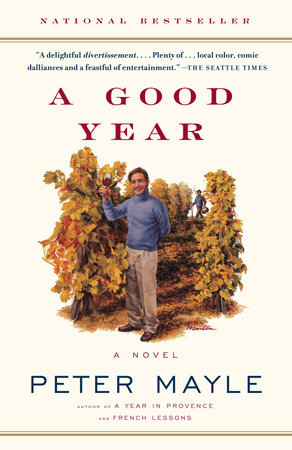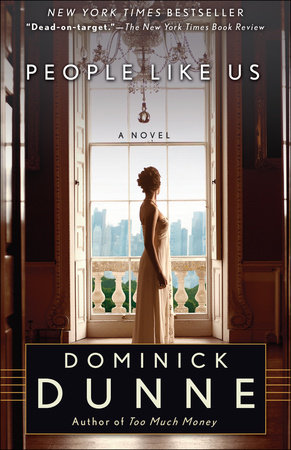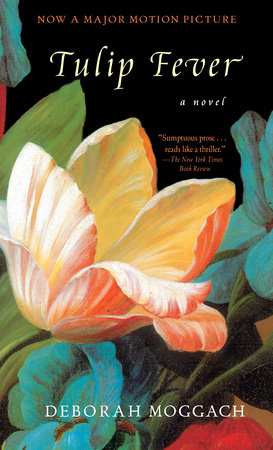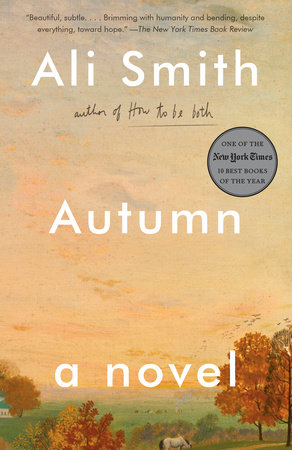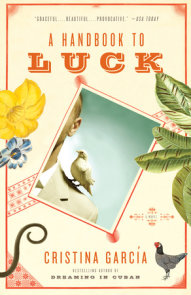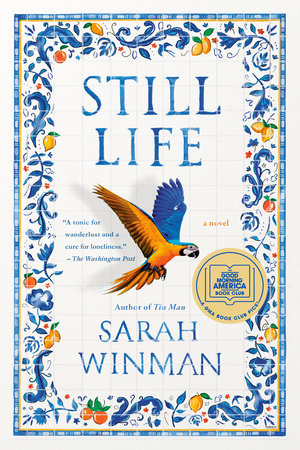Author Q&A
A Conversation with Cristina García
Scott Shibuya Brown is a writer and professor at California State University, Northridge.
Scott Brown: What prompted you to write Dreaming in Cuban?
Cristina García: It was a confluence of three things: I returned to Cuba for the first time since leaving at the age of two and a half, I did a stint as a journalist in Miami, and lastly and probably most important, I started to read poetry in
earnest. The sense of not fitting in either in Havana, or in Miami, the heart of the Cuban exile community, made me start questioning my own identity. Where did I belong? What did it mean to be Cuban? And the poetry made me feverish to write.
SB: When you started to write this, did you have a larger idea of the story you wanted to tell or were you at that time painting on a more miniaturist canvas?
CG: Dreaming in Cuban actually started out as a poem andslowly grew. After about a hundred pages, I realized that what I was working on was a novel. Nobody was more surprised than I. I felt as if I had backed my way into this. If I had known this from the beginning, I might have been too intimidated
to take it on.
SB: When you realized you were in the middle of a novel, did your intentions toward the work change?
CG: I realized I wanted to create very specific characters and chronicle their obsessions, while at the same time exploring the trickle-down effects of the Cuban revolution on their lives and relationships. I also wanted to focus primarily on women. So much of history is written by and about men. I hoped to explore the more personal repercussions of a big political event.
SB: Politics and political allegiances figure in nearly every part of the book, yet none of the characters really exhibits any discriminating political awareness. Ironically, the most sagacious comment comes from Felicia, who says at one
point, “We ’re dying of security.” Is this the nature of the political debate as carried on by Cubans who stayed in Cuba and the exile community?
CG: The public nature of the debate is very black and white, very polarized, very unintegrated. But really, they’re the flip side of each other. The extreme cores of both sides have more similarities than differences in terms of their intransigence
and self-righteousness. Personally, I’m more interested in the gap and shades of gray between these two extremes. That’s what I was trying to explore. There are many ways to be Cuban and I resist the notion that to be Cuban is to hold
particular political views or act in certain circumscribed ways.
SB: Which character do you feel the most affection for and why?
CG: Definitely Celia. For me, she was the guiding spirit of the book, and though I don’t agree with everything she says and does, she seems to always act with a sense of passion and honesty. When I finally met my own maternal grandmother
in Cuba in 1984, I was flooded with a sense of loss for everything that we hadn’t experienced together. I wanted to capture something of that lost connection in the relationship between Celia and her granddaughter, Pilar.
SB: Now let me ask you the character with whom you most identify.
CG: I think of Pilar as kind of an alter ego for me. I grew up with a very bifurcated sense of myself. At home, things were intensely Cuban. In the rest of my life, it had very little meaning. I probably thought of myself, first and foremost, as
a New Yorker—an urban kid with an affinity for many cultures yet beholden to none. It wasn’t until I started to write fiction that my private Cuban self merged with my public self. Now I feel that I live more on the hyphen than on either side
of it.
SB: Lourdes is an intriguing character. Much of what shedoes and says is quite disagreeable, yet in some ways she ’s also sympathetic. What saves her?
CG: What saves her is her unerring instinct to protect what is hers, especially her daughter Pilar, with whom she disagrees on just about everything. When she defends her daughter’s punk portrait of the Statue of Liberty, that is the essential
Lourdes. She ’s tribal and territorial, forthright and aggressive. The woman sleeps well at night and she ’s also unintentionally funny. It’s hard to hate her for very long. I found myself loving her grudgingly.
SB: Speaking of characters, in rereading this, I was struck by Celia’s character. Obviously, she is portrayed much more sympathetically than Lourdes, yet in her own way she’s just as intransigent and inflexible. Would you agree with this interpretation?
CG: Yes. They’re each in their own way die-hard believers, which is why they ultimately can’t get along. I think there ’s very little room for orthodoxy, political or otherwise, between two people who love each other. When politics trumps the personal, bitter schisms are the result. Celia is personally less irritating than Lourdes but deep down, they’re two peas in a pod.
SB: How do Celia’s letters serve the character, and as a novelist, what did this technique provide you?
CG: Celia had a poetic streak that needed an outlet and I felt the epistolary form would provide a greater insight into her nature and sensibility, while also providing textural variety to the narrative. Basically, I wanted her to have her own voice. I wanted her to speak directly to the readers through the guise of this haunted love affair. The letters provide a window into her inner life and yearnings.
SB: It’s striking that all of the characters have deeply troubled relationships with their husbands, wives, and lovers. In fact, the only relationship that seems to bespeak any romantic love is Celia and Gustavo’s illusory one. Why is that?
CG: Because in almost all ways, I think, love is harder than politics. In Celia’s case, it was an idealized love, one that didn’t have to be tested by time and the quotidian. It was easier to keep it alive than anything more reality based.
SB: Similarly, most of the parent/child relationships either are strained or strange. I’m thinking not only of Celia and Lourdes, Jorge and Javier, and Lourdes and Pilar but also of Felicia and Ivanito, and Felicia and her twin daughters. Canyou talk about that?
CG: I wanted to highlight not only generational differences between my characters but also the differences that were compounded by contrasting perspectives on the Cuban revolution. The generation gap was not only familial, but political, and it made ordinary rites of rebellion more complex and fraught with tension. Plus, let’s face it, there was a tremendous amount of dysfunction here, even without the help of the revolution.
SB: Was it hard to write Pilar’s betrayal of Celia at the end? Were you aware of having to consciously make the choice to have her behave this way or did it emerge naturally from the character?
CG: It seemed to me inevitable in that classic Aristotelian way. It was both surprising and inevitable. When it happened, I was personally disappointed in Pilar but I knew she couldn’t sacrifice her cousin. He didn’t belong in Cuba any more than Pilar’s mother did. It would have been criminal to force him to stay. Pilar understood intuitively that this was how it had to be.
SB: And the ending with Celia in the ocean, how did that come about?
CG: It came full circle with the opening when she sits by the ocean and goes for a swim. When I started the book I didn’t know why Celia was wearing the drop-pearl earrings. When I got to the end, it seemed a fulfillment of that opening scene. It begins and ends with the sea, with the lure of the sea and all its promises.
SB: I’ve always felt that the ending derives its power from its ambiguity. Do you see Celia’s fate as ambiguous?
CG: I deliberately wanted it to be ambiguous. I’ve been asked whether Celia commits suicide, or if she swims back to Cuba or even if she might get picked up by the Coast Guard. My answer is always: I really don’t know. In any case, I feel that she’s come to some kind of personal reckoning when she releases
her drop-pearl earrings to the sea.
SB: Can you talk about the novel’s lyricism?
CG: I often thought of the book in musical terms. For me, I fueled this by reading a lot of poetry and paying attention to the musicality of each sentence. I also wanted to capture in English something of the rhythm and syncopation of the Spanish language. I wanted the book to feel as though the reader were experiencing it in Spanish.
SB: Who were some of the poets who inspired you?
CG: At the time, I was reading a lot of Wallace Stevens, Federico García Lorca, Octavio Paz, Pablo Neruda, and William Carlos Williams. I was enthralled by the magic and the imagery, the economy and the astonishing luminosity of their
work. I also was reading a great deal of Chekhov, Borges, and García Marquez. In fact, I return again and again to Chekhov for the great humanity and distillation of his short stories.
SB: Speaking of García Marquez, can you discuss some of the novel’s magical realism?
CG: I first encountered magical realism reading Kafka’s Metamorphosis. I think it exists in many traditions in literature. The South American variety, however, particularly resonated with me and gave me a tremendous sense of possibility.
What I liked to explore is the borderland between what is only remotely possible and what is utterly impossible.
SB: There’s a lot of tragedy in the book yet it’s not tragic. Why?
CG: This could have been a grim book without the saving grace of humor. In Cuba or Miami, who could survive without the ability to laugh at their plight now and then? TheCuban propensity for exaggeration contributes to this. If every exile who claimed to have a deed to his ranch on the island actually produced it, the joke goes, Cuba would be the size of Brazil.
SB: You write a lot about santería. Why is that?
CG: Santería was traditionally an unacknowledged and underappreciated
aspect of what it meant to be Cuban. Yet the syncretism between the Yoruban religion that the slaves brought to the island and the Catholicism of their masters is, in my opinion, the underpinning of Cuban culture. Every artistic realm—music, theater, literature, etc.—owes a huge debt to santería and the slaves who practiced it and passed it on, largely secretively, for generations.
SB: Did you consider yourself an exile?
CG: I feel like I grew up in the wake of my parents’ exile rather than enduring the loss directly. But while I don’t consider myself an exile, I’ve had the privilege of experiencing two cultures at very close range, participating in both and belonging to neither entirely. Compounding this is the sense of voluntary exile
I have as a writer, of stepping outside the stream of everyday
life to try and make sense of it. This is the greatest luxury of this peculiar exile.
SB: What role does memory play in the novel?
CG: Memory is more a point of departure than a repository of facts. It’s a product of both necessity and imagination, of my characters’ needs to reinvent themselves and invest themselves in narratives of their own devising. Each of them needs to be a heroine, to believe she is doing the right thing, choosing
the only path to a kind of personal redemption. They need their memories in this sense to survive.
SB: It’s been more than a decade since Dreaming in Cuban was published. How do you regard it now?
CG: With a bittersweet nostalgia. I gave birth to the book— my first novel—and my daughter in the same year and they both changed my life irrevocably for the better.
SB: Lastly, whose story do you see Dreaming in Cuban as
being?
CG: Personally, I see Celia and Pilar as foreground characters and Felicia and Lourdes as more background characters. But each in her own way is telling an essential part of the story. None can exist without the others.



